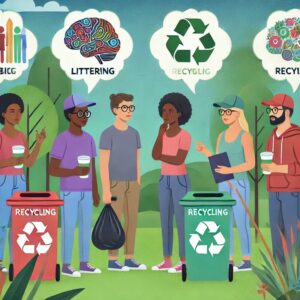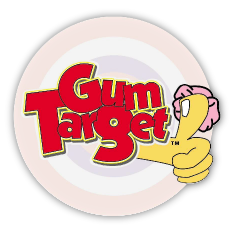One of the biggest reasons people litter is the simple fact that it’s easier than finding a trash can. Some people don’t want to hold on to their trash until they find a bin. Even if it’s just a small item like a gum wrapper or a cigarette butt, when thousands of people think this way, those small things add up. Much of this behavior is rooted in a lack of respect for spaces that belong to the public, or a belief that it’s someone else’s job to clean up. Laziness adds a lot to the problem, especially in areas where people think they won’t face immediate consequences for their actions.
Littering often happens because people think they can get away with it without being caught. There is some sort of detachment from the environment when one feels anonymous in public. The thinking is that the eventual cleaning of the litter will be done by someone other than the person who littered. This ‘not my problem’ thinking creates an endless cycle where people feel less connected with public spaces and thus, find it easier to treat them with disrespect by littering. Areas that are public but dirty already are more attractive for littering since people think a little more won’t hurt.
If a park is already full of trash, a visitor may subconsciously think it’s ok to leave their trash behind. This behavior relates to the so-called ‘broken windows theory,’ which states that visible signs of disorder and neglect (in this case, litter) lead to more disorder and neglect. The area appears to be uncared for, and sadly this can create a tendency to litter.
 Psychological Factors Influencing Littering
Psychological Factors Influencing Littering
Cognitive dissonance is the uncomfortable feeling we get when our actions don’t match our beliefs. For example, someone might claim to care about the environment but still throw a piece of trash on the ground because it’s too convenient at the moment. To feel better about this behavior, the person might tell himself that his one piece of trash really won’t make a difference. After a while, doing this kind of little thing often makes a person more or less numb to the responsibility for it, making it easier to do it again.
People are less likely to change if they don’t fully understand the consequences of their behavior. Making the connection between litter and how it hurts animals, water systems, and the general ecosystem can be a real eye-opener. It’s about connecting those facts to personal values and ethics. Campaigns that show how littering directly affects local communities can create a more personal bond between the audience and the environment.
When people notice their friends littering and getting no punishment for it, they might start to think it is okay to do so. If an environment discourages such behavior, individuals are more likely to follow suit. A sustained effort and reinforcement from community leaders, educators, and public campaigns are necessary to create a culture that disapproves of littering.
The Social and Environmental Impact of Littering
Animals sometimes see litter as a food source and may eat it, which can injure or kill. In the wild, litter—such as plastic bags and bottles—can lead to entanglements that inhibit swimming or flying in animals. In addition to causing direct harm to wildlife, litter has the potential to disrupt entire ecosystems. Waste, when it breaks down, can change the chemistry of soil and water, which in turn can affect everything from plant life to microbial activity. This disruption can affect species at multiple levels by creating ripples through the food chain.
Much money is spent annually by municipalities trying to deal with litter. This money could be better used for infrastructure, education, or health care. Beyond direct cleanup costs, there is also the impact of litter on tourism and property values. A clean, well-tended community invites visitors and businesses, leading to new jobs and increased revenue. Litter, on the other hand, sends a message of neglect that can repel visitors as well as new residents. It has a detrimental effect on local pride and can cripple a sense of community, making people less likely to get involved in local activities.
Pests like rodents and insects, which carry diseases, can be attracted to trash. Stagnant water in discarded items can become a breeding site for mosquitoes, thereby raising the potential for vector-borne diseases. The presence of litter in public areas can discourage some forms of recreation. Parks and beaches polluted with trash discourage people from using these spaces and, as a result, limit opportunities for physical activity and rest. The deterioration of public spaces thus contributes to a lower quality of life for residents, who take less pleasure in their community when it is marred by persistent waste.
Strategies to Change Littering Behaviors
To bring to light the problems that littering creates, public campaigns are indispensable. Effective campaigns will be designed for particular communities, using messages and images that speak to local values and problems. Using social media, events, and community leaders will help spread these messages further. By creating an emotional connection to nature and shared spaces, the campaigns will inspire people to change their littering behavior and encourage others to do the same.
More trash and recycling bins in the community’s public places would further the proper disposal of waste. The bins should be placed in highly visited areas and emptied often so that they do not overflow. Signage indicating the direction of the nearest bins or information about waste sorting would help as well. People are more likely to throw away trash if it is not inconvenient to do so. Making sure that these bins are attractive and in harmony with the general appearance of the place would further encourage use.
By giving participants incentives, such as vouchers or tokens, and organizing community clean-up activities, you can encourage more people to join– enthusiasm! Involvement of the community can create feelings of ownership and pride in keeping the environment clean. Volunteer programs that invite individuals to “adopt” a particular street or park and regularly pick up litter can be very successful. These programs should include and involve different demographics to ensure that all members of the community feel they have a share in its wellbeing.



